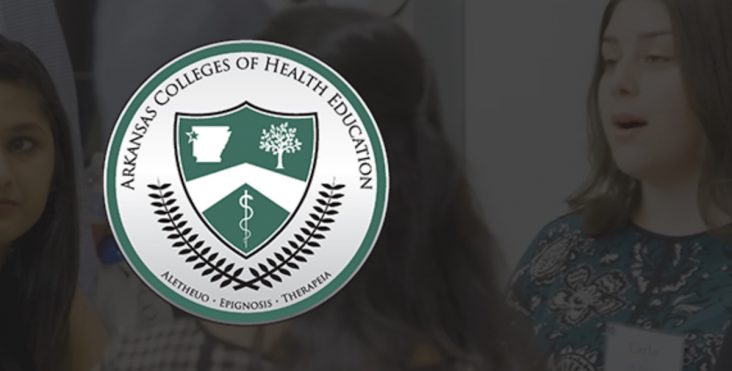Arts integration designed to improve physician empathy, communication skills
by July 29, 2021 2:57 pm 1,139 views

Editor’s note: This story is the first of what will be a series on the details and potential impact of the recent $32.3 million donation to the Fort Smith-based Arkansas Colleges of Health Education to create and expand numerous health research and wellness programs.
The arts play a fundamental role across all ages and levels of education in multiple areas, said Dr. Elizabeth McClain, chief wellness officer for Arkansas Colleges of Health Education. And in the coming months, it will play an important role in education at ACHE.
“(The arts) provide a foundation for increased collaboration and reflective communication which strengthen skills needed for effective teamwork, creative problem solving and overall health and wellbeing,” McClain said.
She said arts integration is specifically helpful in an osteopathic medical school and health professions education because it can improve patient-centered care.
“Providing space for creative collaboration allows students to focus on innovation in healthcare and increased social advocacy. The arts also support student wellbeing by increasing resilience, stress management and reflection reducing risk of burnout,” McClain said.
A $32.3 million anonymous donation to the Arkansas Colleges of Health Education, announced June 22, will support a holistic approach to health and wellness and include partnerships with public schools, art centers, a community garden, and a Northwest Arkansas-based culinary study center. The donation creates an endowment that will pay for staff, program costs and construction for the ACHE facility at 1000 Fianna Way.
ACHE acquired the former Golden Living headquarters in 2020 for the purpose of housing a medical research facility and a health and wellness education center. Work on the five-story facility – now known as the ACHE Research Institute Health and Wellness Center – is underway and should be complete within two years.
At the time of the announcement, ACHE officials said the inside of the ACHE Research Institute Health and Wellness Center will house a community art gallery in partnership with the Fort Smith Regional Art Museum and the Center for Art Education in Van Buren. The program will include art instruction for students and the community, an artist in residence program, and a performing arts theatre for productions and dance. An art walk will be located outside the ACHE Research Institute Health and Wellness Center. McClain said ACHE has strong collaborative partnerships with RAM and CAE, which will support the ongoing integration of arts across all levels of education.
“ACHE will continue to measure outcomes with research-based approaches to assess, strengthen and expand programs,” she said.
The center also will offer applied arts where occupational and physical therapy students can create and produce adaptive devices using a 3-D printer and a ceramics lab with a kiln to improve hand and eye coordination and art creation. Dr. Jennifer Moore, dean of the School of Occupational Therapy at ACHE, said the primary use of ceramics in the occupational therapy program is to demonstrate the use of arts like ceramics in interventions (physical, cognitive, and psychosocial) and that will be the primary use of the ceramics lab.
“Occupational therapists use various media as part of their interventions. One intervention might be to help children and adults whose eye-hand coordination impacts function or independence,” Moore said.
She said an occupational therapist might choose to use ceramics because you can modify the technique to address individualized goals.
“For example, an individual with minor challenges could complete the entire process from pouring the slip into a mold to the finished piece. Another individual with greater challenges may need to start with just painting the ceramic piece. Each task of the process of creating a piece of art requires different skills including eye-hand coordination, strength, bilateral coordination, sequencing, vision, activity tolerance, etc.,” she said.
McClain said arts can and will be used in other ways for the students at the different colleges at ACHE. One example is Visual Thinking Strategies (VTS) where students are guided through a process of analyzing visual artwork, which can be used in medical education to develop clinical observation skills to improve patient care.
“Medical improvisation theater where students must address a variety of physician-patient scenarios provides another example of how theater can be used to increase empathy and communication skills,” she said.
McClain said they expect to bring more arts to ACHE students starting this semester. New class orientation started July 19 and classes began July 23. Second-year students return Aug. 2.
